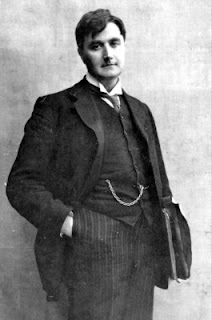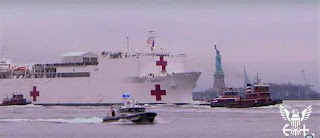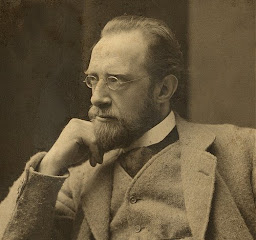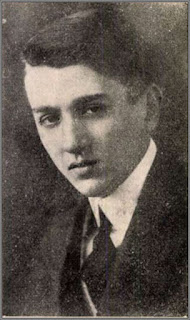Best British Symphonies: 3. "Maritime" Symphonies
Ralph Vaughan Williams - "A Sea Symphony" & Joseph Holbrooke - Symphony No. 3 "Ships"
Another remarkable "First" is Ralph Vaughan Williams' Symphony No. 1 "A Sea Symphony", written between 1903 and 1909, and set for solo soprano and baritone, mixed chorus and a large orchestra. More akin to a cantata - set to words out of "Leaves of Grass" by the then popular 19th century American maverick and poet Walt Whitman (his verses having inspired composers from Frederick Delius to Rutland Boughton, amongst many others) - it does, however, show the outline of a traditional four-movement symphony, if you can call the half-hour long finale, titled The Explorers, anything but unusual and expansive, both in its formal conception as well as through its highly metaphysical content.
 |
| Ralph Vaughan Williams in 1910 |
The work was first performed, under the composer's baton, at the Leeds Festival of 1910 and has remained a favourite ever since. Stylistically, there are influences of Stanford and Parry, and of Elgar in the finale, but Vaughan Williams' deepened interest in both the English Folksong movement and the music from the Elizabethan era are unmistakably shining through the melodic and polyphonic setting. The ongoing work received a not insignificant uplift by the brief but worthwhile studies the composer enjoyed with Maurice Ravel in 1907/08, whose modernistic ideas of harmony and orchestration further permeate the finished piece.
However, there are more than just a few flaws and blemishes in this symphony, according to Hugh Ottaway's analysis (Vaughan Williams Symphonies, p. 14ff., in: BBC Music Guides, BBC Books, London 1972): many of the sections, especially in the huge finale, are much disjointed, as the formal challenges - exacerbated by the vastness of the chosen lyrics - prove too much for a hitherto inexperienced symphonist.
This does not mean that there is not a lot of beautiful, grand music! For instance, the wide opening choral episodes of the 1st movement A Song for All Seas, All Ships, the haunting baritone solo of the 2nd On the Beach at Night, Alone, the tempestuous choral-only 3rd Scherzo - The Waves, and the tranquil ending of that epic 4th movement finale The Explorers.
There are, owing to the work's continuing popularity, numerous recordings of this work available across the various record labels, and I dare not to pick any special favourites as so many are performed to an excellent standard; however, I can reveal that in my record collection one finds the readings by Previn & the LSO, Hickox & The Philharmonia and Elder & the Hallé.
***
For its outer movements alone - which are entitled I. Warships. Allegro e con fuoco and III. Merchantships. Finale marcia - Poco allegro marcato - Joseph Holbrooke's Symphony No. 3 in E minor "Ships" op. 90 would not have made it into this listing. Written in 1925, both movements are rather conventional and uneventful. However, it is due to the second movement, with its sombre title II.Hospitalships. Larghetto espressivo, that the work is well worth mentioning.
 |
| USNS Comfort |
Not since the deployment of the USNS Comfort to the port of New York during the peak of this year's Coronavirus outbreak have we been reminded that hospital ships still exist. Holbrooke picks up their eerie athmosphere in this excellently conceived movement - whose Bb minor key is as far removed from its companions' as imaginable -, scored for woodwinds, horns, harps and strings, which are muted throughout much of the movement, and an alto saxophone obligato. The heavy brass and timpani only come in during the few climactic moments. The densely polyphonic texture of the music conjures up the harrowing feeling which must have pervaded onboard such ships - one can almost imagine the moaning of the wounded and sick - but also the comfort which would have radiated from the hope of recovering.
 |
| Joseph Holbrooke |
What is most striking, however, is that Holbrooke's music here - in stark contrast to the otherwise outmoded and conservative outward movements - is prophetically modern, and points, in a way, towards the scores of a Richard Rodney Bennett almost half a century later. With 14 minutes playing time this Larghetto may well be enjoyed by itself as a concert piece rather than the middle movement of this symphony.
There is a fine recording of this symphony on the CPO label by the Deutsche Radio Philharmonie under Howard Griffiths, coupled with two further orchestral pieces by this often underrepresented but incredibly gifted composer.


Comments
Post a Comment